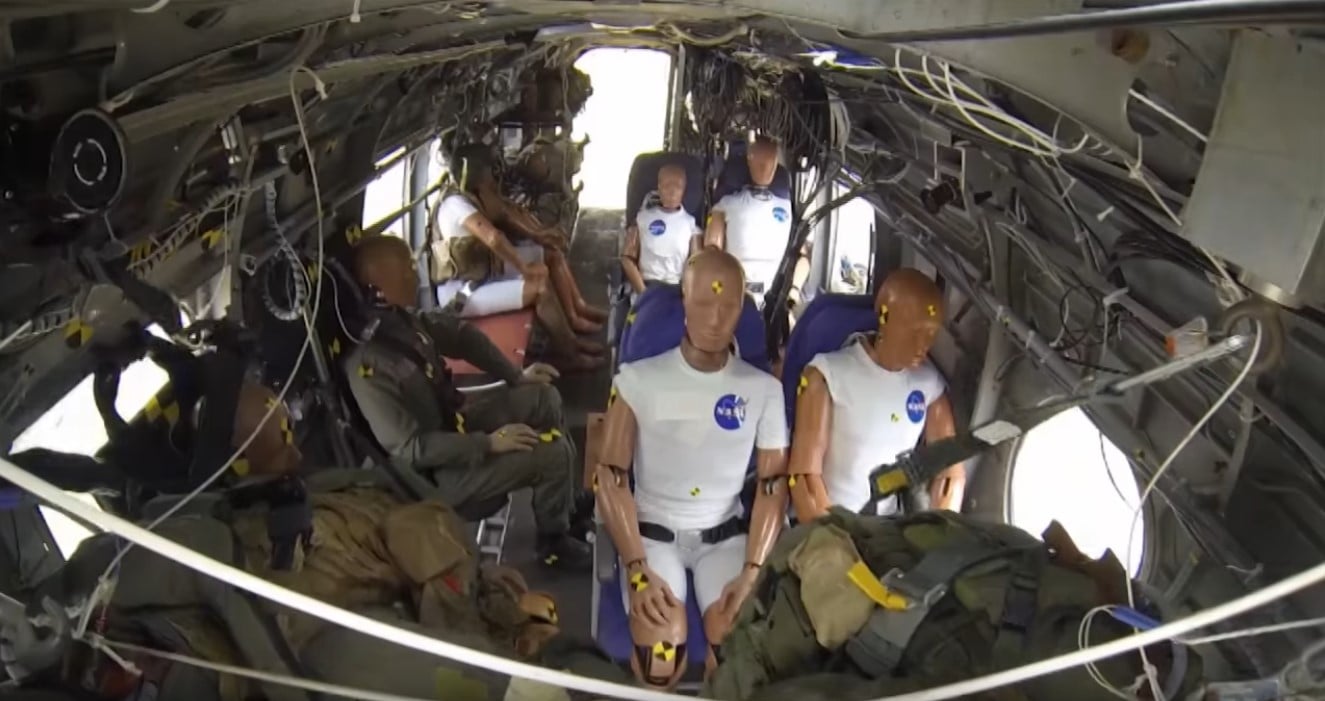Scientists are constantly working to improve our traveling conditions, starting from passengers in airplanes to protecting astronauts in their space capsules while they are traveling from Earth to the ISS or elsewhere. NASA’s Langley Research Center in Hampton, Virginia is working on ways of improving conditions in aviation in order to make it safer for everyone, using crash-test dummies.
A video posted on YouTube offered a sneak-peek at the crash-test dummies. The video examines the work of the team and shows that it “ranges from next-generation aircraft to water-impact tests that evaluate the splashdown of Orion astronaut crew capsules returning from space.”
Some experiments were shown in the video, and many of them include the team using crash-test dummies. Those dummies greatly resemble those that are used in crash tests by car designers who are looking for ways to protect drivers and passengers and improve the overall safety in the event of a collision.
These dummies sport one useful feature: sensors that enable engineers to get insight into the data coming from each impact test. However, given that there are many crash scenes in the video, it may not provide the viewer with the best experience, especially if flight scenes make them nervous. However, those who like to watch that kind of content and are interested in what NASA’s team is doing are more than welcome to watch it.
“Everything that you want to know about injury occurs anywhere from one-tenth to four-tenths of a second [during impact],” Martin Annett, a structural impact dynamics engineer at the Langley Research center, said during the video. “We have to be able to capture a lot of data within that time-frame.”
Annett added that thanks to the exponential development in technology, the team was able to equip the crash-test dummies with much smaller instrumentation for recording the data, explaining that “it has got a lot smaller – you can now put a suite of sensors just in the back of the head and then the data will be stored on a laptop. We can take a look at that data, evaluate that against injury criteria, [and] compute different injury criteria.”
According to the engineer, astronauts and the team can make great use of the collected data in order to craft stronger suits and helmets. If the helmets are light enough and well-balanced, they will reduce the chances of death caused by an impact during any stage of any mission, especially when astronauts are returning to Earth.
One part of the video reveals a cross-section of a plane fuselage with the sensor-installed dummy passengers as it hit the ground with huge force after a vertical drop. Annett described that there is a need for improved, energy-absorbing seats in such a scenario. The team will continue to test new possibilities for safer aviation in the future, but until then, we should be satisfied with the progress so far.





